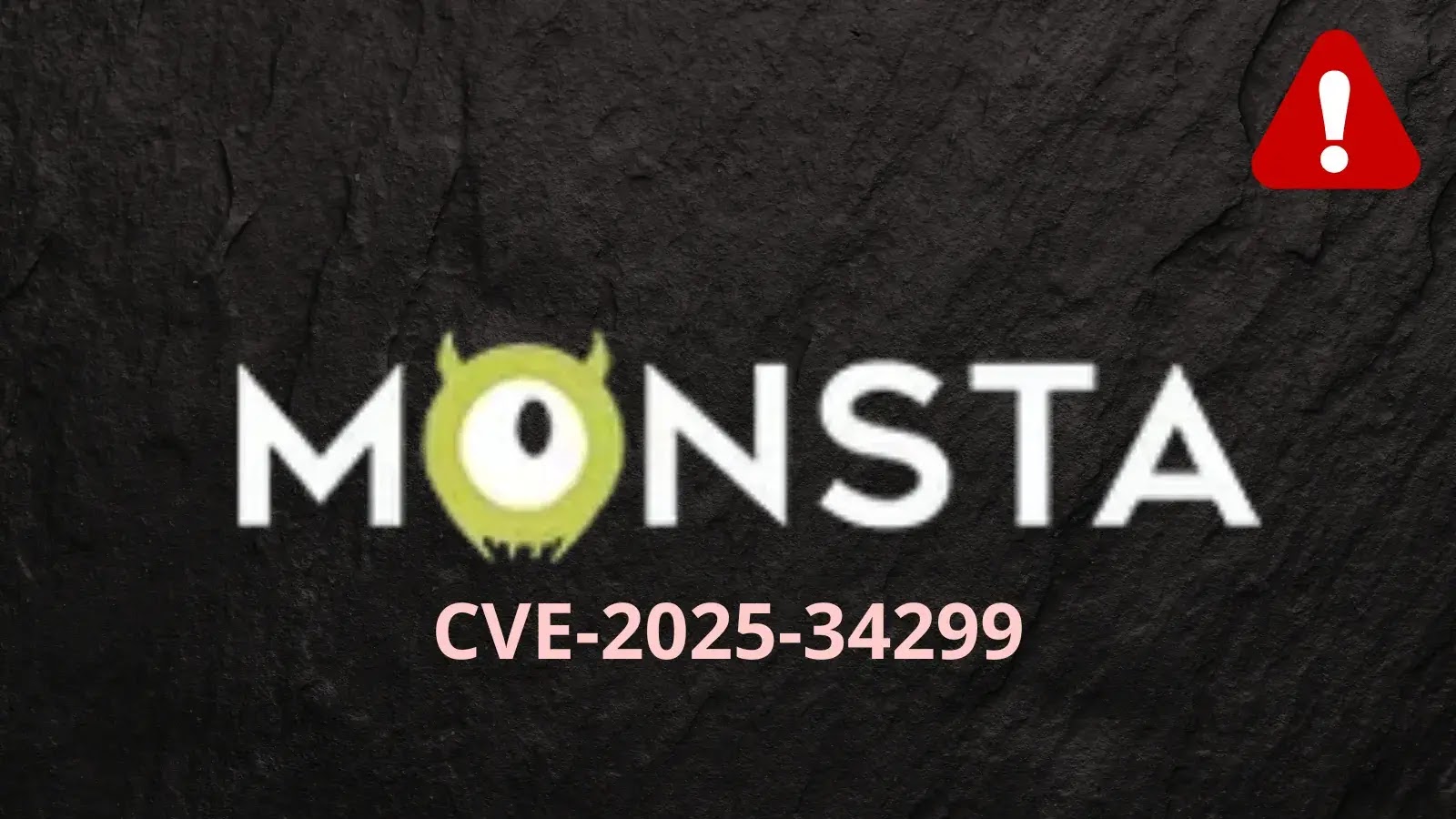
Monsta web-based FTP Remote Code Execution Vulnerability Exploited
A significant threat has emerged for organizations relying on web-based file transfer solutions. A critical remote code execution (RCE) vulnerability, tracked as CVE-2025-34299, has been discovered in Monsta FTP, a popular browser-based FTP client. What makes this flaw particularly alarming is not just its severity, but the confirmed reports of its active exploitation in the wild, placing financial institutions and global enterprises at immediate risk.
This development underscores the persistent challenge of securing web applications, especially those handling sensitive data transfers. The compromise of an FTP client, often a critical component of IT infrastructure, can grant attackers deep access into an organization’s network, leading to data breaches, system compromise, and significant operational disruption. Understanding the nature of this vulnerability and implementing timely remediation are paramount for safeguarding digital assets.
Understanding the Monsta FTP RCE Vulnerability
Monsta FTP is a widely adopted web-based FTP client, prized for its ease of use and accessibility. It allows users to manage files on remote servers directly through a web browser, eliminating the need for dedicated desktop applications. However, this convenience now comes with a critical security caveat. The recently identified RCE vulnerability, designated as CVE-2025-34299, enables an attacker to execute arbitrary code on the server hosting the Monsta FTP client.
A Remote Code Execution vulnerability is one of the most severe types of security flaws. It essentially allows an attacker to bypass security measures and run their own malicious commands on a remote system. In the context of Monsta FTP, this means an unauthorized individual could potentially gain complete control over the web server, access sensitive files, deploy malware, or even pivot to other systems within the compromised network. The fact that this vulnerability affects “multiple versions of the software” implies a potentially broad attack surface and highlights the need for a thorough assessment across all Monsta FTP deployments.
Impact and Real-World Exploitation
The exploitation of CVE-2025-34299 poses significant risks to organizations. For financial institutions, the compromise could lead to the theft of financial data, customer credentials, or the manipulation of transactions. Enterprises, on the other hand, face risks ranging from intellectual property theft and service disruption to reputational damage and compliance penalties. The “exploited in the wild” status elevates this threat from theoretical to an immediate, active danger.
When an RCE vulnerability is successfully exploited, the consequences are often far-reaching:
- Data Breaches: Attackers can exfiltrate sensitive data, including customer information, proprietary files, and confidential documents.
- System Takeover: Full control over the server hosting Monsta FTP allows for further network penetration.
- Malware Deployment: The compromised server can be used as a staging ground for distributing malware, ransomware, or cryptominers to other systems.
- Operational Disruption: Services can be disrupted, websites defaced, or critical business processes halted.
- Reputational Damage: News of a successful breach can severely impact an organization’s public image and customer trust.
Remediation Actions and Mitigations
Given the severity and active exploitation of CVE-2025-34299, immediate action is crucial for all organizations using Monsta FTP. The following steps should be prioritized:
- Patching and Updates: The most critical step is to apply any available patches or updates released by Monsta FTP that address CVE-2025-34299. Continuously monitor official Monsta FTP channels for security advisories and promptly implement recommended fixes.
- Vulnerability Assessment: Conduct a comprehensive vulnerability scan of all web servers and applications to identify any instances of Monsta FTP and confirm their patch status.
- Network Segmentation: Isolate the server hosting Monsta FTP within a tightly controlled network segment. This limits an attacker’s ability to move laterally within the network if the server is compromised.
- Principle of Least Privilege: Ensure that the Monsta FTP application and its underlying web server operate with the absolute minimum necessary privileges.
- Web Application Firewall (WAF): Deploy and configure a WAF to detect and block malicious requests targeting the Monsta FTP application. This can provide an additional layer of defense against exploitation attempts.
- Intrusion Detection/Prevention Systems (IDS/IPS): Implement and monitor IDS/IPS solutions for unusual activity, particularly originating from or targeting the Monsta FTP server.
- Regular Backups: Maintain regular, secure backups of all critical data and system configurations to facilitate recovery in the event of a successful attack.
- Security Audits and Monitoring: Conduct regular security audits and maintain vigilant monitoring of logs for any suspicious activity related to Monsta FTP or the web server.
Tools for Detection and Mitigation
Several tools can assist in detecting vulnerabilities and mitigating risks associated with web applications like Monsta FTP:
| Tool Name | Purpose | Link |
|---|---|---|
| Nessus | Vulnerability Scanning and Assessment | https://www.tenable.com/products/nessus |
| OpenVAS | Open Source Vulnerability Scanner | http://www.openvas.org/ |
| ModSecurity | Web Application Firewall (WAF) | https://www.modsecurity.org/ |
| Snort | Intrusion Detection/Prevention System (IDS/IPS) | https://www.snort.org/ |
| OWASP ZAP | Web Application Security Scanner (Proxy) | https://www.zaproxy.org/ |
Key Takeaways for Cybersecurity Professionals
The exploitation of CVE-2025-34299 in Monsta FTP serves as a stark reminder of the persistent and evolving threat landscape facing web applications. Organizations must remain proactive in their security posture, prioritizing timely patching, thorough vulnerability assessments, and robust defensive measures.
For IT and security teams, the immediate focus should be on identifying all instances of Monsta FTP within their environment, verifying their patch status, and implementing the recommended remediation actions. A comprehensive, layered security approach, including network segmentation, WAFs, and vigilant monitoring, is essential to mitigate the risks posed by such critical vulnerabilities and protect sensitive data from malicious actors.





